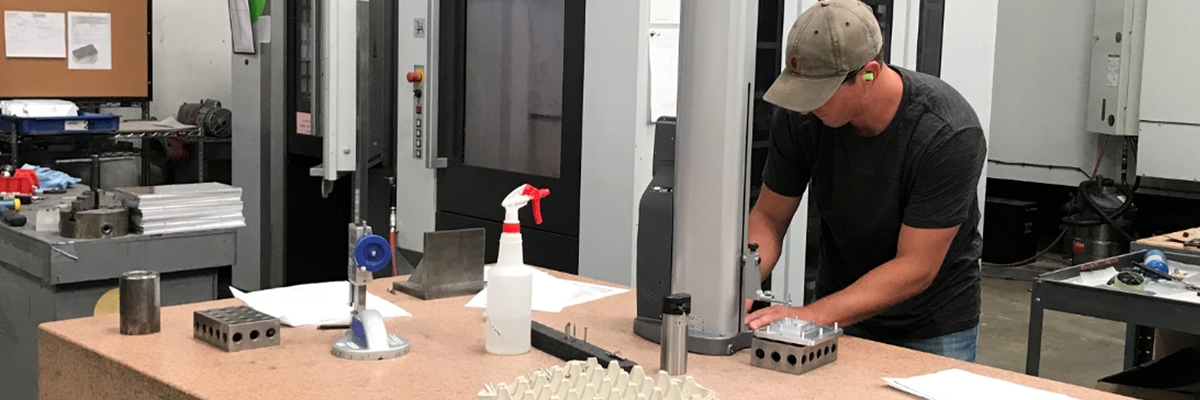A Jem of a Shop
Seattle area full-service contract manufacturer finds VERICUT machine simulation software critical to avoiding five-axis machining center crashes
The term “one stop shop” is admittedly cliché, but once in a while you come across a manufacturing company that truly fits the bill. Jemco Components and Fabrication Inc. is one of these. This family-owned business in Kirkland, WA offers prototype and production machining, sheet metal fabricating, contract assembly services, laser marking and etching, and a host of finishing options, and has been doing so for three decades and two generations.
Raising the stakes
Two years ago, however, the stakes grew higher. As the company’s level of five-axis machining grew, management decided that an alarming number of “little crashes” could quite easily turn into one big crash, quite possibly damaging an expensive machine tool and at the very least disrupting deliveries to any one of its customers in the aerospace, military, medical, or energy industries.
With more than two dozen five-axis machining centers on the line, Jemco vice president Travis Moore and his team began looking for an alternative to the traditional “push the green button and pray” program prove outs.
“A number of companies tried very hard to sell us on their simulation software, telling us how their solution would address all of our needs, but after a lot of research and talking to a number of people, we found that VERICUT was the only software with true G-code simulation,” Moore says.
Since 1988, VERICUT from CGTech, Irvine, CA, has been the leader in CNC toolpath and machine simulation. Because it reads the actual code used by the machine controller, it picks up where CAM systems leave off. Every workpiece, fixture, toolholder, and machine component can be accurately modeled, leaving nothing to chance. Gouging and uncut areas are clearly identified. Setup times are reduced, and because complete visibility to the machining process is achieved, opportunities for process improvement are greatly enhanced. Best of all, collisions are virtual rather than spark-filled and noisy.
Straddling the manufacturing fence
Moore’s parents started the company when he was a child. Their decision to pursue sheet metal fabrication and precision machining under the same roof was made on day one with the purchase of a Finn-Power turret punch and an Okuma Cadet machining center. It was apparently the right decision, because Jemco has become quite successful at both types of metalworking.
The fabricating side of the 70,000 sq. ft. shop is now home to Amada press brakes, a Mazak OptiPlex 4kW laser cutter, Finn Power punch presses with sheet loading capabilities, and TIG, MIG, and spot welding equipment. There are laser markers and fastener machines, and Jemco has strategic partnerships with a variety of metal finishers. There’s little they can’t produce.
The machine shop is even more impressive. Altogether Jemco has just shy of 40 CNC lathes and machining centers on its production floor. Equipment builders include Haas, Okuma, Mazak, and others, but topping the list is a pair of DMG Mori NMV1500 five-axis vertical machining centers—one sporting a 40,000 rpm spindle—and serviced by a 34-pallet robotic cell material handling system.
“We try to be really diverse,” he says. “My Dad saw from the very beginning that there was value in having a one-stop shop. There are plenty of complex fab parts that require milling, and he felt that managing both was something he could do fairly easily. It's been smooth sailing ever since.”
Calm waters
Part of that smooth journey has been due to VERICUT, at least recently. “All those little crashes we were seeing have died down to nothing,” he says. “That’s saying a lot, because most of our production quantities are small—say between two and two dozen pieces—and we therefore set up many jobs each day. And as anyone in this business will tell you, the more times you're setting up, the more opportunities you have to mess up. I strongly tie our lack of crashes to VERICUT.”
Lots of jobs also means lots of programmers—in Jemco’s case, there are seven, each with his or her own way of doing things. CNC programmer Chuck Macomb says VERICUT helps him answer the many questions that arise when generating toolpaths for a machining center that cost more than most people’s house.
“Is there any interference between the toolholders and the vise? Did the program cut the part right? Is the spindle going to bump the workpiece? Did each axis go the direction you expected it to? There are all kinds of problems that can occur, but because the CAM software doesn’t see the same thing the machine sees, there can be occasional surprises. VERICUT eliminates the wondering.”
Jemco CNC programmer Tony Maldonado agrees. “We use Siemens NX for our CAM platform here,” he says. “It does a good job on most parts of telling you if you're going to crash or violate the part in any way, but you have to pay close attention to see it. Sometimes things are moving so fast that it’s easy to miss something, and that's where VERICUT comes in. You can see any areas that you missed during programming, any gouges, and especially any crashes.”
Article published in Cutting Tool Engineering, February, 2019 Germany
Germany Italy
Italy USA
USA South Korea
South Korea UK
UK India
India France
France China
China Japan
Japan
